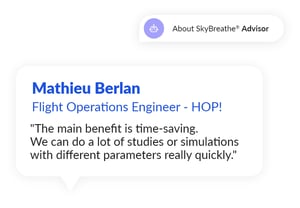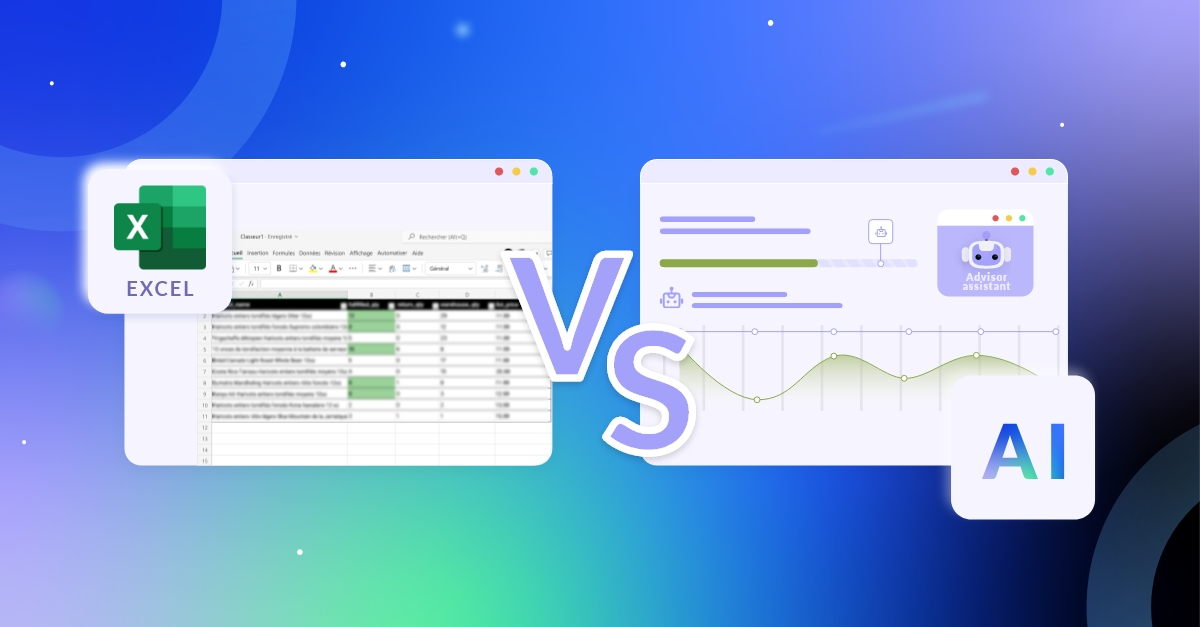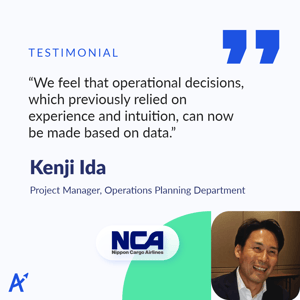From Excel to AI: Why APAC airlines must modernize fuel optimization
With razor-thin margins and intensifying sustainability pressures in the Asia-Pacific region, fuel efficiency is becoming a board-level priority. Paradoxically, many airlines still manage fuel performance using spreadsheets or legacy in-house tools.
What may seem like a cost-saving decision is quietly costing millions.
As fuel remains one of the highest costs, the ability to optimize fuel consumption is becoming a critical differentiator. And modern AI-powered tools are rewriting the playbook. Here’s how:
|
Summary The hidden costs of sticking with outdated tools:
Manual workflows, data silos, and limited forecasting capability of spreadsheets are no match for the data volumes and decision speed modern operations demand. AI-driven tools deliver tangible ROI:
Bottom Line: Where is your airline standing? This list of questions will help you evaluate if your airline is leading or lagging regarding fuel optimization. If you're unsure or answering “no” to more than two, your airline is likely leaving significant savings on the table. Answer the questions. |
The legacy trap: what spreadsheets can’t do for airlines
For years, spreadsheets and internal databases have been the default tools for tracking fuel performance. However, their limitations have become more pronounced as data volume and competitive pressure increase.
|
💡The hidden costs of sticking with outdated tools:
|
Why are modern airlines making the switch from Excel to AI?
Top-performing airlines around the world are leveraging AI to uncover fuel-saving opportunities that traditional methods miss. The transformation is tangible:
📉 Up to 5% fuel burn reduction, translating to millions of dollars in annual savings.
⏱️ Faster analysis cycles, enabling real-time decision-making.
🧠 Strategic insights, not just data dumps.
Let’s focus on the savings you can expect from AI-powered fuel optimization tools
To give you a concrete idea, here’s what airlines of different sizes typically save each year using an AI-driven solution like SkyBreathe®:
| Small airlines | Medium airline |
Major airline |
|
| Fleet type |
15 Medium Haul AC |
40 Medium Haul AC |
150 Medium Haul AC |
| Annual savings | ~ $2 M / year | ~ $5 M / year | ~ $20 M / year |
| Annual CO2 savings | - 8 Ktons / year | - 20 Ktons / year | - 80 Ktons / year |
These results reflect average savings based on real-world performance across the SkyBreathe® airline Community. Top-performing airlines have reported 2–5% savings without buying new engines or aircraft.
Curious to know what that could mean for your operations? 👉 Try our ROI calculator to find out.
What do fuel and money savings mean for airline profit?
Let’s put the financial impact of AI-powered fuel efficiency in the APAC region into perspective.
Take an airline with:
- A $1 000 million annual fuel budget
- Fuel represents 33% of total operating costs
- A net profit margin of just 1%

If that airline reduces fuel consumption by just 1% using an AI-powered software, here’s what happens:

That’s a direct $10 million fuel cost reduction. Also, since fuel accounts for 33% of total costs, a 1% drop in fuel spend equals a 0.33 percentage point reduction in total operating costs.
That 0.33% shift goes straight to the bottom line, boosting the net profit margin from 1% to 1.33%.
This represents an increase of 33% in annual profit.
We are talking about net profit, not just savings, so that money can be reinvested in operations, sustainability, or customer experience.
AI makes profit improvement for airlines possible through:
- Automated inefficiency detection: Machine learning identifies trends, anomalies, and patterns across thousands of flights.
- Actionable insights: From aircraft weight to descent procedures, the system analyzes granular performance data and highlights improvement opportunities.
- Predictive simulations: What-if scenarios help flight ops and finance teams assess the fuel and cost implications of proposed operational changes.
- Fleet-wide benchmarking: Comparing your performance not just internally, but with industry leaders, routes, and aircraft types.
Related content >>> How AI is revolutionizing aviation
From retrospective to proactive: a culture shift
Spreadsheets are a mirror. AI is a compass.
By moving from retrospective analysis to forward-looking intelligence, airlines shift fuel efficiency from a reporting exercise to a strategic lever. Teams go from explaining yesterday’s variances to shaping tomorrow’s outcomes.

This shift:
- Enables data-driven leadership decisions.
- Enhances cross-department collaboration.
- Supports faster rollouts of fuel-saving initiatives.
- Aligns with sustainability goals and ESG metrics.
Discover how AI-driven insights can maximize fuel efficiency and drive sustainable practices
👉 Watch the webinar: How AI boosts airlines' fuel efficiency.
Bottom line: The cost of waiting to upgrade analysis systems in a hyper-competitive region is high.
🚨APAC carriers operate in one of the most competitive aviation markets in the world. Rapid fleet expansion and high fuel exposure targets make operational efficiency essential, not optional.
|
|
In an industry where competitive advantages are measured in single-digit percentages, standing still may be the most expensive move of all.
Spreadsheets served their time, but in today’s data-rich, high-stakes environment, they’re no match for the strategic clarity AI delivers. With the right tools, you don’t just catch up, you leap ahead!

LEARN MORE
Is your airline leading or lagging?
These questions are designed to help you assess how effectively your organization is managing fuel efficiency and operational performance. If you're unsure of any answer or answer “no” to more than two, your airline may be missing out on major cost-saving opportunities.
- Are our pilots receiving actionable feedback after each flight?
- How long does it take us to identify and implement a new fuel-saving initiative?
- Do we know how our performance compares to leading carriers on key routes?
- Can we predict the fuel impact of proposed changes before we make them?
- Is our team spending more time formatting data than finding insights?
Let’s connect and explore how AI-powered fuel optimization can help your airline take the lead.



